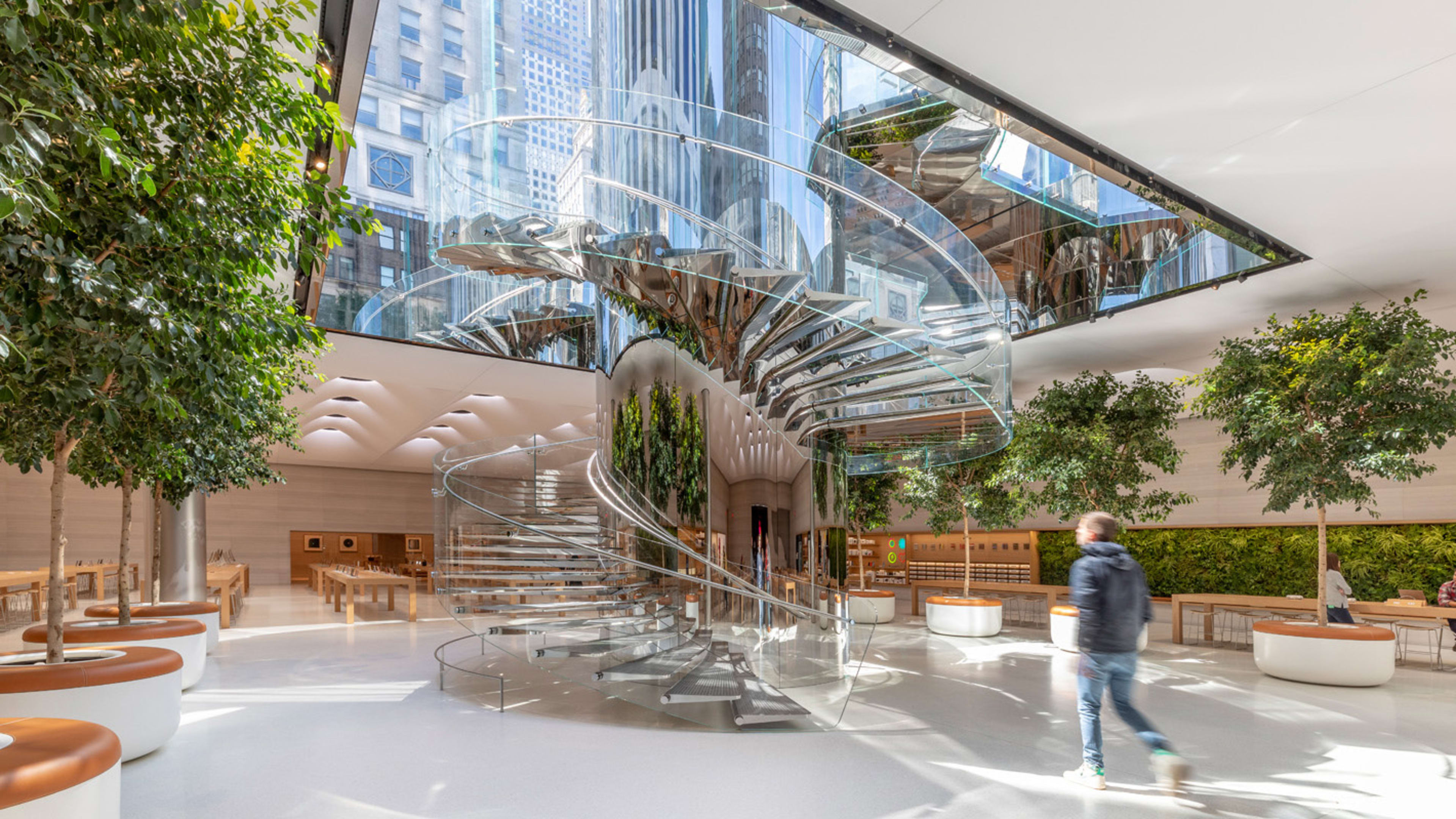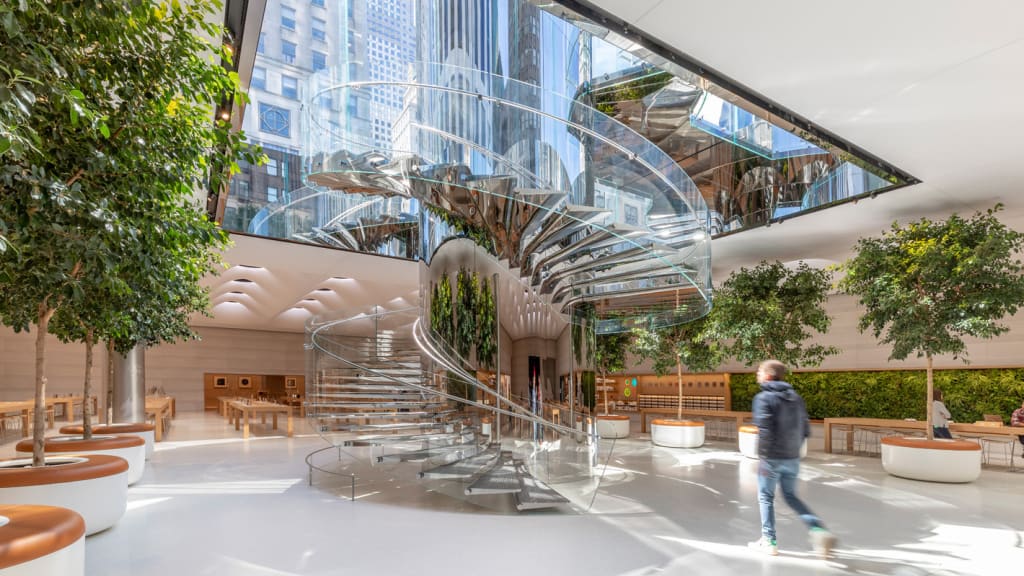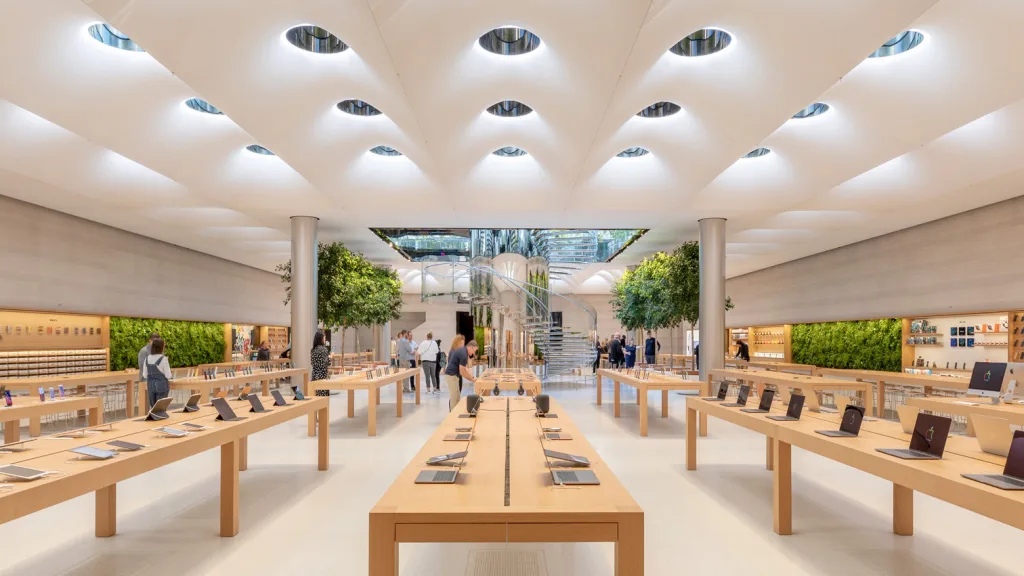Today, after two years of renovations, Apple reopens its landmark Fifth Avenue store in New York, located kitty-corner from Central Park. The new store is larger and even more architecturally striking than the previous building, which attracted a steady stream of tourists.
The new design, created by British architecture and engineering firm Foster + Partners, plays on the original vision for the store as a sunken open-air plaza. Above ground, there is still the brand’s iconic glass cube, which has featured holographic rainbow colors for the past week. But underground, the space has nearly doubled, to 77,000 square feet, creating new challenges and opportunities for the architects to bring more natural light into the space.

One of the most innovative parts of this redesign are the 18 mirror-glass sculptures, which Apple calls “Skylenses.”
These lenses are arranged in a grid pattern on either side of the glass cube. Above ground, the large, mirrored spheres reflect the sky and surrounding buildings while serving as places for passersby to sit. The designers even created a temperature-regulating system beneath the glass so the spheres don’t get too hot or cold, allowing people to sit on them all year round. But below ground, a glass circle in the middle of each lens lets sunlight into the underground store, highlighting particular products on strategically placed tables. There are also 62 other skylights that dapple the store with sunlight, and the store’s electric lighting can be modulated to match the natural light.
“The Skylenses literally bring the skies underground,” said Stefan Behling, Foster + Partners’ head of studio, in a statement. “The innovative tunable white light ceiling allows us to match the exact wavelengths of sunlight at different times of the day, blurring the boundary between inside and outside.”
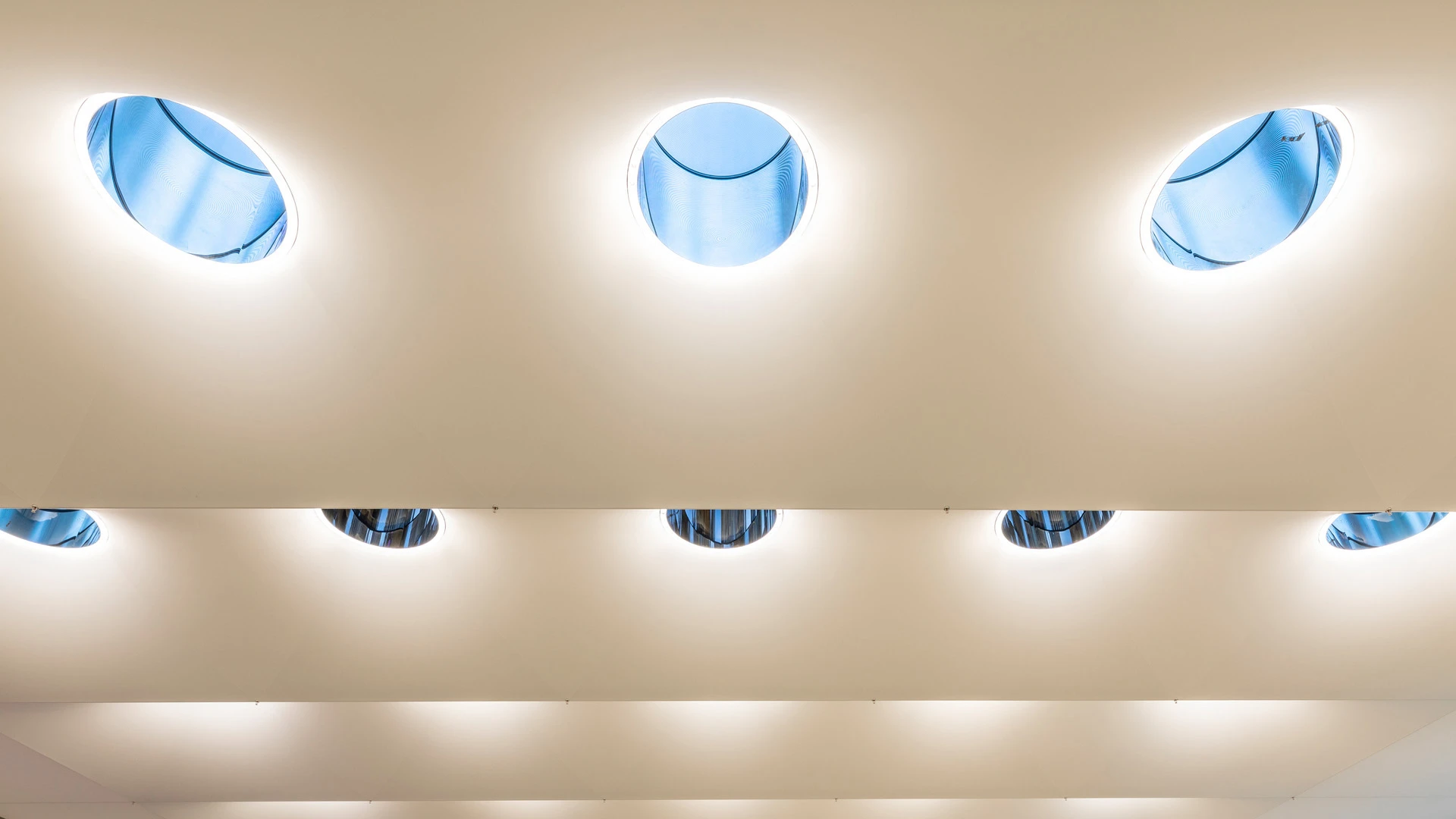
The architects were just as concerned about the space above the store as underneath. The site of the store has a long history. In the 1960s, it was turned into a sunken plaza. But in 2000, it was filled in with concrete. The location attracted a lot of people who wanted to photograph the glass cube when Apple first moved to the site in 2006, but a major goal with the renovation was to rethink the plaza as truly usable space. In addition to the Skylenses, the new plaza features stone seaters shaded by trees. Linear fountains along the edges of 58th and 59th streets are designed to create a buffer from the street and provide more seating.
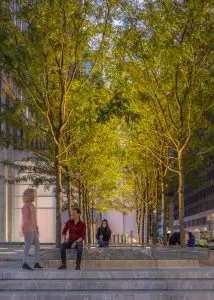
Companies are swooping in to create branded gathering spaces where they can bring like-minded customers together. But, of course, their motives aren’t entirely altruistic. The idea is to inspire loyalty and goodwill toward the brand, and drive people to buy products.
Apple is doing this at a large scale here on Fifth Avenue. In a public statement, Foster + Partners said the architects designed the plaza to be a gathering spot: “[It] is the perfect stage for celebrating Apple’s passions: photography, music, art and design, coding, and more.”
Recognize your brand’s excellence by applying to this year’s Brands That Matter Awards before the early-rate deadline, May 3.
